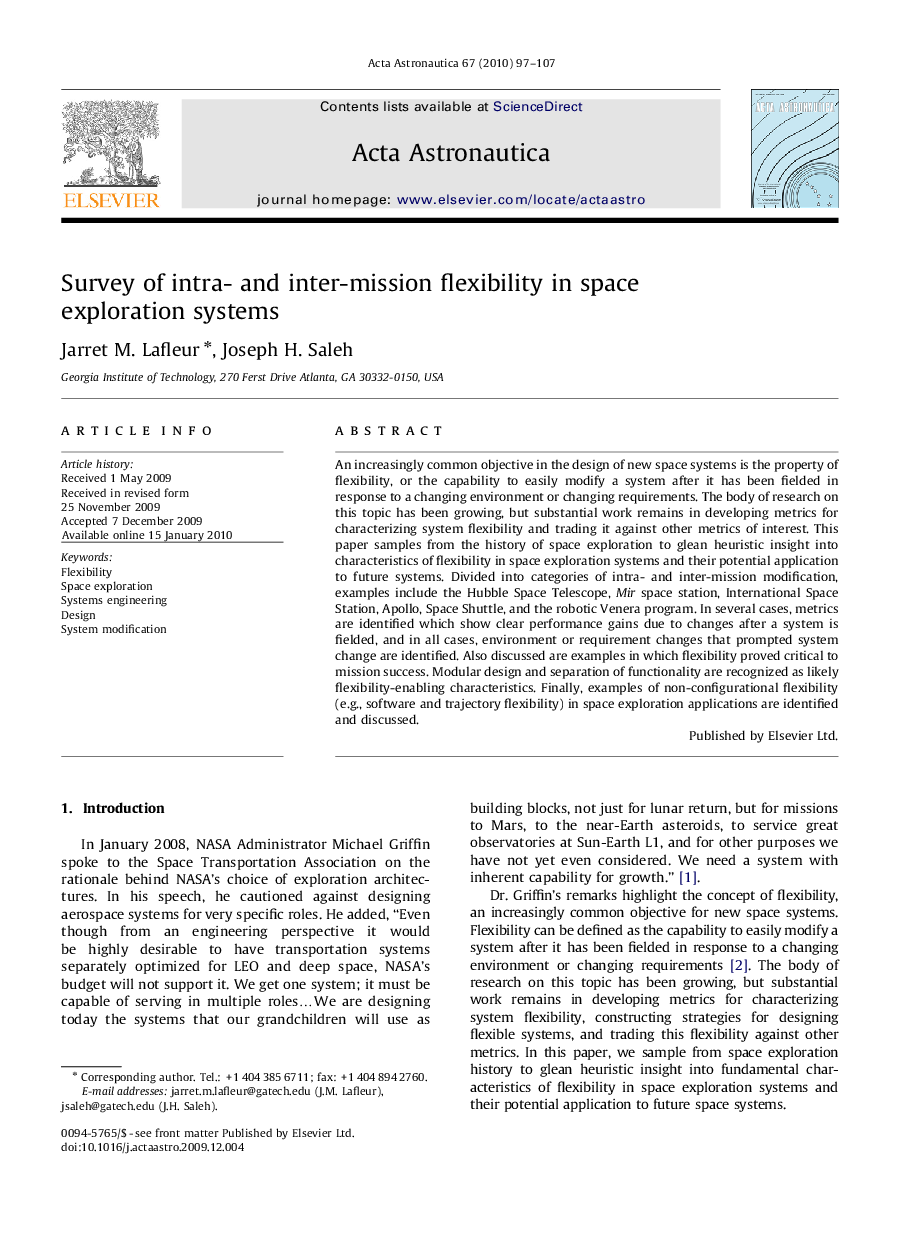| Article ID | Journal | Published Year | Pages | File Type |
|---|---|---|---|---|
| 1715991 | Acta Astronautica | 2010 | 11 Pages |
An increasingly common objective in the design of new space systems is the property of flexibility, or the capability to easily modify a system after it has been fielded in response to a changing environment or changing requirements. The body of research on this topic has been growing, but substantial work remains in developing metrics for characterizing system flexibility and trading it against other metrics of interest. This paper samples from the history of space exploration to glean heuristic insight into characteristics of flexibility in space exploration systems and their potential application to future systems. Divided into categories of intra- and inter-mission modification, examples include the Hubble Space Telescope, Mir space station, International Space Station, Apollo, Space Shuttle, and the robotic Venera program. In several cases, metrics are identified which show clear performance gains due to changes after a system is fielded, and in all cases, environment or requirement changes that prompted system change are identified. Also discussed are examples in which flexibility proved critical to mission success. Modular design and separation of functionality are recognized as likely flexibility-enabling characteristics. Finally, examples of non-configurational flexibility (e.g., software and trajectory flexibility) in space exploration applications are identified and discussed.
